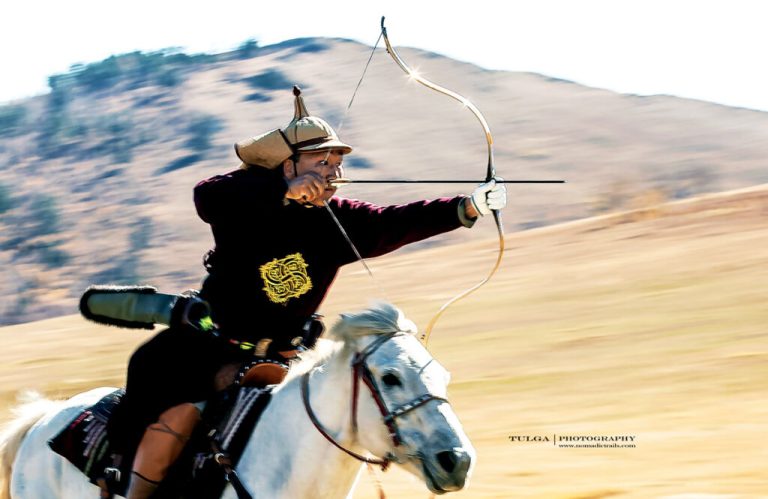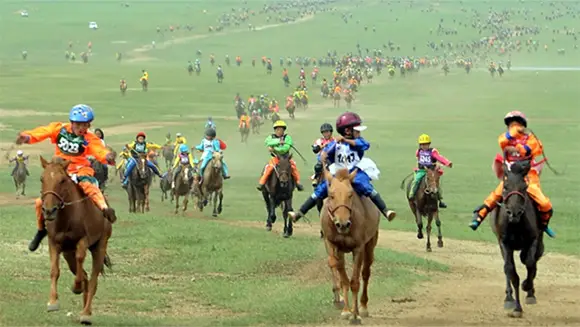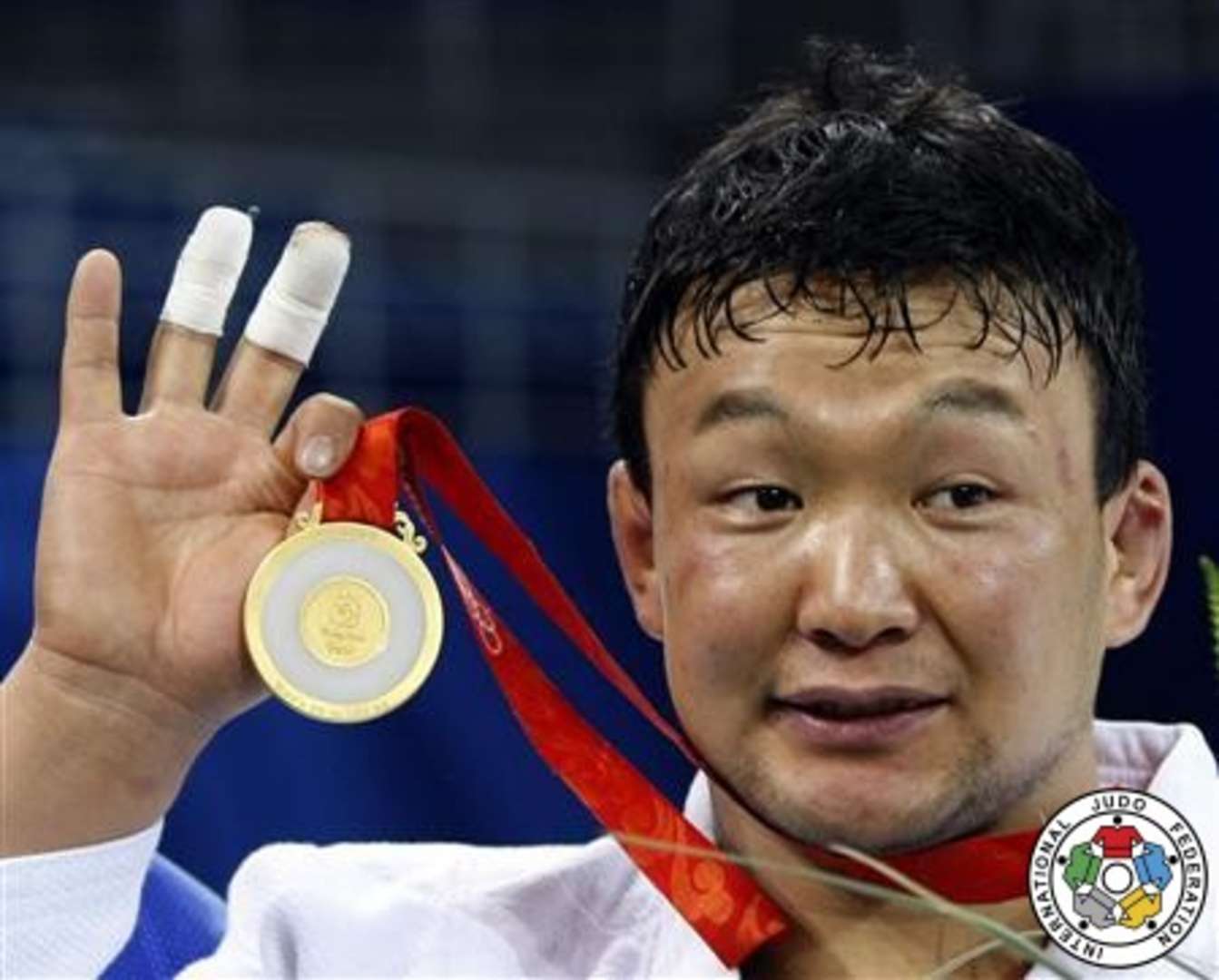In the vast steppes of Mongolia, where nomadic culture and Mongolian yurts has thrived for centuries, sports are deeply woven into the very fabric of society. From the thundering hooves of racehorses to the grappling prowess of wrestlers, Mongolia’s national sports have stood the test of time, captivating generations with their rich history and spectacle.
At the heart of Mongolian sports lies the “Three Games of Men” / Naadam – horse racing, archery, and wrestling – celebrated annually at the iconic Naadam festival. This vibrant event, held in the capital city of Ulaanbaatar, is a true feast for the senses, where athletes, musicians, and dancers converge to showcase the nation’s cultural heritage.
Mongolian Archery

The rituals surrounding archery competitions are steeped in tradition. Archers take their positions 75 meters from the target for men and 60 meters for women. Each competitor must shoot 40 arrows, aiming for the small red inner rings that represent the vital areas of game animals or human targets in battle.
Beyond marksmanship, archery embodies the virtues of focus, patience, and respect for nature that defined the nomadic Mongol lifestyle. The Mongolian horse bow and arrow were not just weapons but sacred tools that provided sustenance and protection for families traversing the boundless steppe.
Even today, as modernity encroaches, archery remains an integral part of major festivals like Naadam. The sight of archers donning traditional deel robes and skillfully drawing their bows is a powerful link to Mongolia’s glorious past. With each arrow released, the spirit of the ancient nomads echoes across the land, reminding all of the enduring cultural legacy that has withstood the test of time.
Mongolian Wrestling

With a history spanning over two millennia, Bokh is more than just a physical contest – it is a sacred rite that celebrates the very essence of Mongolian identity. Unlike its modern counterparts, this traditional form of wrestling defies conventional rules and boundaries, existing in a realm where only the strongest and most skilled can emerge victorious.
One of the most striking aspects of Mongolian wrestling is the absence of weight classes, age limits, or even a designated wrestling area. Competitors of all sizes and ages take to the open field, where the only boundaries are those defined by their skill and determination. Time holds no sway in these battles of endurance, with matches continuing until one wrestler is forced to touch any part of their body, other than their feet, to the ground.
Horse Racing

Across the boundless grasslands of Mongolia, the thunderous rhythm of galloping hooves has echoed through the ages, carried on the wind like the heartbeat of the nation itself. For centuries, horse racing has been more than just a sport; it is an indelible part of the Mongolian identity, an enduring testament to the profound bond between humans and these noble creatures.
In a land where nomadic traditions have persisted for millennia, horses are revered as cherished companions and invaluable assets. From the moment a Mongolian child takes their first steps, they are introduced to the equine world, learning to ride and care for these majestic animals as if they were members of the family.
The races themselves are a breathtaking spectacle, with riders ranging from seasoned adults to fearless children as young as five years old. Divided into categories based on the horses’ ages, these events range from grueling 10-26 km endurance tests for the most seasoned steeds.
Judo / Wrestling

In modern times, this rich legacy has manifested in the remarkable success of Mongolian athletes on the international stage. Judo champions like Naidan Tuvshinbayar and Khashbatyn Tsagaanbaatar have carried the mantle of their ancestors, displaying a ferocity and tenacity that can only be forged in the crucible of Mongolia’s unforgiving landscapes.
But perhaps more importantly, judo and wrestling remain deeply ingrained in the cultural fabric of Mongolia itself. In the remote corners of the nation, where the rhythms of nomadic life still persist, these martial arts are not merely sports but a way of life, passed down from generation to generation like sacred rites.
Boxing
While wrestling, horse racing, and archery remain the pillars of Mongolia’s ancient sporting traditions, the modern era has witnessed the meteoric rise of another combat sport – boxing. In recent decades, Mongolian boxers have begun making their mark on the international stage, etching their names in the annals of Olympic glory.
The roots of boxing’s popularity in Mongolia can be traced back to the communist era of the 20th century. As the Soviet influence spread, many Soviet sports disciplines, including boxing, took hold across the nation. The gritty, intensely physical nature of boxing struck a chord with the Mongolian warrior spirit, igniting a passion that continues to burn brightly today.
It was at the 2008 Beijing Olympics that Mongolia first announced its arrival in the boxing world. Enkhbatyn Badar-Uugan, a featherweight fighter with a relentless offensive style, captured the nation’s first-ever Olympic boxing gold medal.
As a new generation of Mongolian boxers continues to emerge, the nation’s passionate embrace of the sport shows no signs of waning. From the bustling capital of Ulaanbaatar to the most remote aimags, boxing gyms have become sanctuaries where dreams of Olympic glory are forged, one punch at a time.
